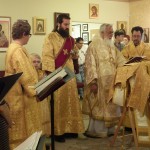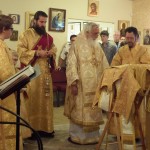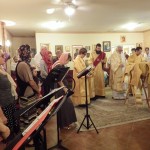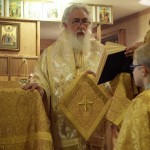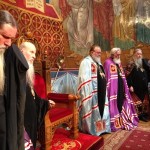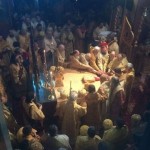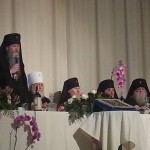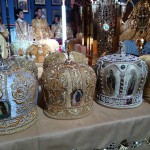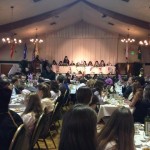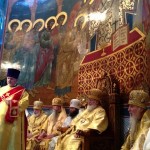THE HODIGITRIA OF THE RUSSIAN DIASPORA
On the Kursk-Root Icon of the Mother of God
The foundation for the iconographic type, or composition, of the Icon of the Mother of God “of the Sign” are the words of Prophet Isaiah: “Therefore the Lord himself shall give you a sign; Behold, a virgin shall conceive, and bear a son, and shall call his name Immanuel” (Isaiah 7:14).
In the 13th century, the Kursk region, as well as the rest of Russia at the time, was subjected to terrible decimation by the Tatar invasion. The city of Kursk was completely destroyed and grew into a wild, overgrown forest, populated by wild animals. The residents of the city of Ryl’sk, 90 versts (60 miles), who had somehow been spared from a Tatar invasion, would go there to hunt. And it happened that in 1295, on the feast day of the Nativity of the Mother of God, a small troupe of hunters from Ryl’sk arrived at the Tuskor River, 27 versts (18 miles) from Kursk, to hunt. One of them, a pious and honorable man, seeking prey in the woods, found a small icon lying face down at the root of a tree. He had barely lifted the icon from the ground to inspect it, when a strong wellspring of pure water burst forth from the very spot where the icon lay. The icon turned out to be of the Mother of God “of the Sign” type. The hunter realized that this was no ordinary icon. He summoned his fellow hunters, and together they cut down timber and erected a small chapel where they placed the newly-found icon. The people of Ryl’sk, learning of the icon, began to visit it for veneration, and many miracles occurred as a result. Continue reading
